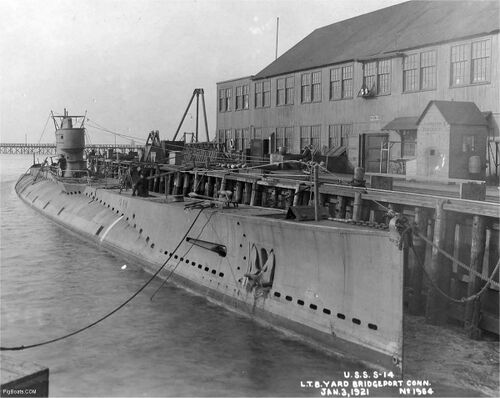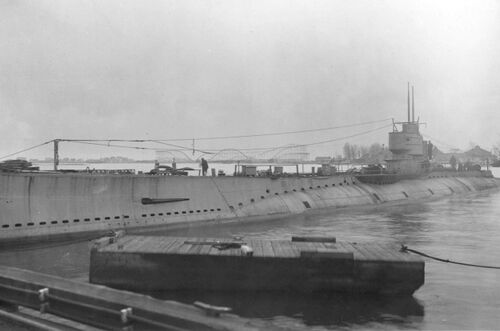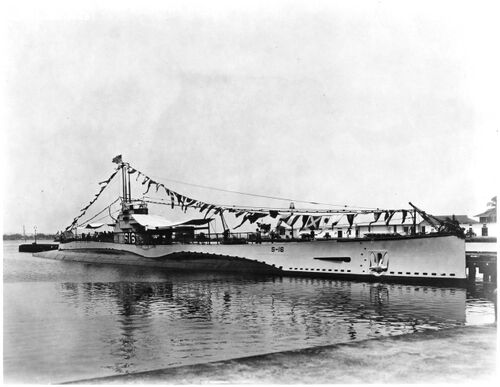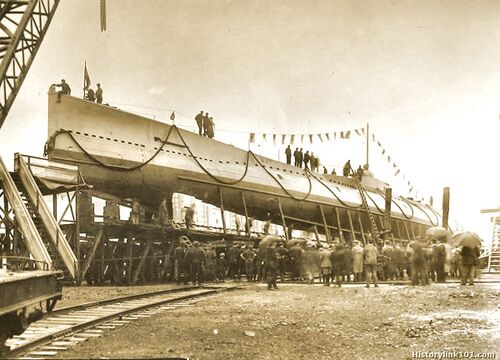S-14 through S-17

Design and Construction Notes
However, the Navy was keen on maintaining a commercial competitor to EB in order to keep EB from developing a monopoly while the Navy stood up its own submarine design and construction capability. Thus, despite Lake's poor performance, the Navy awarded him one contract for a 800 ton S-boat for the FY-17 program. At this point the Navy was fed up with Lake's drama and decided that the S-2 (SS-106) would be the last of his designs that they would accept. To keep him going and to help round out the massive S-class program, the Navy offered him two contracts to build copies of the internal Bureau of Construction & Repair's design. Lake, his pride stinging from the rejection of S-2 but badly needing the cash infusion, accepted the contracts. Most likely seeing the handwriting on the wall, Lake's company dove into the first contract with gusto, promptly laying the keels for S-14 to S-17 at his Bridgeport, CT. yard.
These four boats were direct copies of the C&R S-3 design, with the only exception being that the Navy ordered Lake to use a six cylinder, four cycle, 700 hp engine from the Busch-Sulzer Company of St. Louis. These engines, although considered to be underpowered, were quite reliable and were liked by the Navy. This contract pre-dated the C&R shift to below water bow planes, so S-14 to S-17 had the S-3 style above water retractable bow planes in a slit in the forward superstructure.
All four boats served the Navy well through the end of WWII, although they only served in training and local patrol work in U.S. waters during the conflict.S-14 (SS-119)

S-15 (SS-120)

S-16 (SS-121)

S-17 (SS-122)

Page created by:
Ric Hedman & David Johnston
1999 - 2023 - PigBoats.COM©
Mountlake Terrace, WA, Norfolk, VA
webmaster at pigboats dot com